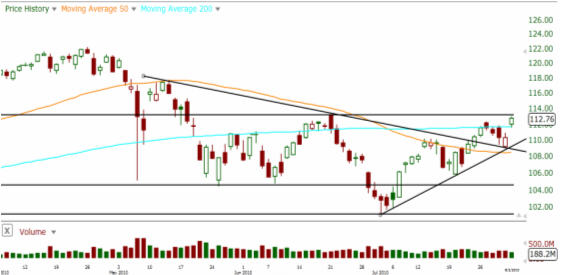The Hidden Potential of Learning How to Trade SPX & Gold Options
J.W. Jones
Market technicians believe they operate in a world that few people truly understand. It is as if they believe they are working in some sort of secretive financial construct that only a few lucky souls away from Wall Street can access. The truth is that technical analysis should only be used as one metric to help a trader navigate financial markets.
There are a variety of research methodologies which all shed light and offer clues where the market may be heading. Market internals, the volatility index, Fed speak, and even fundamental analysis can be helpful to traders. It would not make sense to ignore market information that provides greater insight and additional clues that can help give a trader an edge. After all, the edge is what all traders seek. The sweet spot in trading is having a trading system that gives you an edge and offers a variety of way to quantify, mitigate, and define risk.
The same traders that only look to use purely technical analysis in their trading also fail to recognize other investment vehicles which might offer advantageous returns. The best kept secrets are always kept in the open, right beneath the public’s proverbial nose. People will travel the world in search of secrets or to prove theories, but in many cases the Holy Grail is lying right beneath their noses.
The greatest secret financial markets offer are the unbelievable potential returns that options can offer. Options offer a variety of ways to profit in a multitude of market conditions. Options offer unique profit engines that are not available or even possible when trading stocks or bonds. Most traders overlook options or are simply unwilling to put in the time or effort to learn how to trade them appropriately. In doing so, they are walking away from huge opportunities.
Most novice traders are quick to spurn options as they consistently lose money when trading them. The most common reason novice option traders experience losses is that they do not do their homework beforehand. New option traders fail to recognize the importance of “The Greeks.” Option traders not only have to be cognizant of the volatility index, but they have to be proficient in the dynamic factors that impact option prices such as implied volatility. In the future, my articles will be focused with the intent to educate readers about “The Greeks” in a way that is easy to read and understand.
Traders that utilize a trading system or that look for low risk entries find themselves sitting idle when market conditions are not favorable for their trading system or when prudent entries have not presented themselves. The ability to trade options gives a trader another investment vehicle that can offer potential profits. In most situations, options can offer attractive returns while taking significantly less risk than trading stocks, ETF’s or bonds.
In order to illustrate a situation where options can present a better risk versus reward, we need to look no further than intraday market action in the S&P 500 on August 2nd. The market rallied from the previous close and was bumping up against significant resistance. Traders could have been looking to get long or short based on recent price action. The market had been consolidating, and a significant move was likely coming.
Clearly the market was at a crossroads and a breakout could be right around the corner, or the market could test recent highs only to turn down to retest recent support. Stock traders have to make a decision about direction or sit on the sidelines and let others do the heavy lifting. Option traders could put on positions that have a directional bias, or they could utilize time decay (theta) as a profit engine.
Through the use of spreads such as an iron condor or a butterfly spread, option traders can actually put on a position that has the ability to be profitable regardless of which direction SPY goes. In order for a spread to work, SPY’s price must stay within the confines of the spread which is also determined by the specific option strike prices selected by the option trader. Similar to the mechanism that drives asset pricing, the more risk an option trader takes the greater their return. If a spread is written that is extremely wide and thus less risky, potential returns diminish.
Ultimately, this is a recent example of how options can offer more than just leverage, but a totally different methodology that can produce outsized profits. In the future, we will dissect the various spreads and the profit engines that drive them. However, before we begin detailed discussion of various option strategies, option traders must have a sound understanding of various volatility principles as well as the impact that the Greek’s have in the world of options. In closing, I will leave you with the muse of George Orwell, “To see what is in front of one’s nose requires a constant struggle.”
If you would like to continue learning about the hidden potential options trading can provide please join my FREE Newsletter: www.OptionsTradingSignals.com
J.W. Jones is an independent options trader using multiple forms of analysis to guide his option trading strategies. Jones has an extensive background in portfolio analysis and analytics as well as risk analysis. J.W. strives to reach traders that are missing opportunities trading options and commits to writing content which is not only educational, but entertaining as well. Regular readers will develop the knowledge and skills to trade options competently over time. Jones focuses on writing spreads in situations where risk is clearly defined and high potential returns can be realized.

